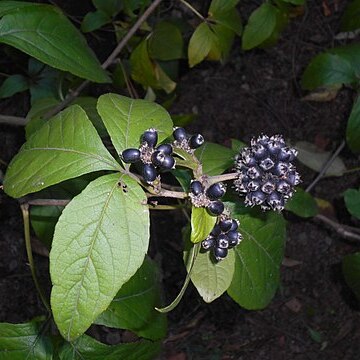Trees, small, to 5 m tall. Branches unarmed or with scattered, erect or recurved prickles. Petiole 3-12 cm, unarmed or with small prickles; petiolules 2-10 mm; leaflets 3-5, obovate, oblong-obovate, or oblong-lanceolate, 8-18 × 3-7 cm, papery, secondary veins 5-7 pairs, distinct, adaxially glabrous or slightly scabrous, base cuneate, margin irregularly serrate, apex acuminate. Inflorescence terminal, a raceme of umbels, borne on leafy shoots, with 3-6 capitate umbels; peduncles 0.5-3 cm, densely pubescent; pedicels absent (flowers sessile). Calyx with 5 teeth, white pubescent. Corolla dull purplish. Ovary 2-carpellate; styles united basally into a column, free apically. Fruit obovoid-globose, 1-1.5 cm; styles persistent, ca. 3 mm. Fl. Aug-Sep, fr. Sep-Nov.
More
A shrub. It grows 4.5 m high. It spreads 3.5 m wide. There are 3-5 teeth around the edge. The leaves are 15 cm long. The leaf stalks are sometimes prickly. The flowers are purple. The flowers are often in clustered heads. The fruit are fleshy and black. They are 12 mm long.

